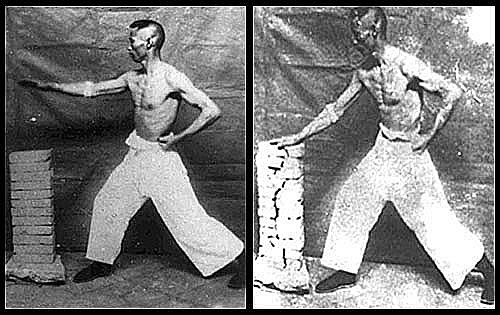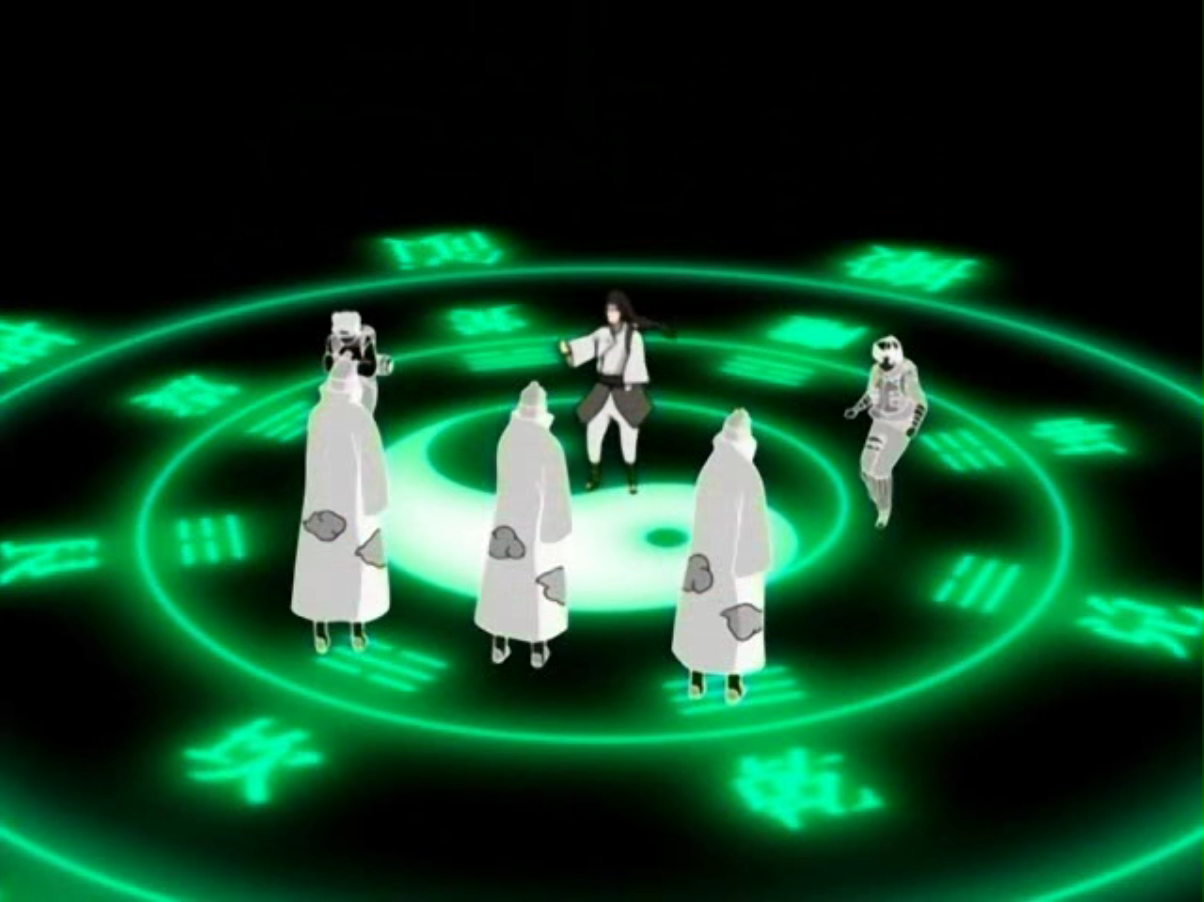Conditioning the Palms

One of the first differences between Kung Fu forms and those of Karate that I have noticed when I got into Kung Fu was the use of the palm.
In Karate we have a descending hammer fist strike, an inward knife hand, knife hand thrust and a straight punch and of course a palm thrust or teisho tsuki.
Go through the Kung Fu styles derived from Shaolin and Wudang and you find that they have a straight forward palm strike, a downward palm strike and an inward palm strike.

I guess the palm of the hand is about as central in Kung Fu, especially Wudang Kungfu, as the fist is in Karate.
Interesting to note- while the traditional fighting styles of the Ryukyu are known to have the te (hand)- suffix Chinese martial arts can be found to have the suffix quan(fist) or zhang(palm).
The most well-known palm style is Baguazhang (Eight Trigram Palm) of Wudang.

Yes, Naruto fans- such a style really exists....
Also- while in Karate we have known tameshiwari (breaking) demonstrations using the knife hand, fist, foot, elbow, forearm and thrusting palm, Kungfu is known to have its Iron Palm breaking demonstrations which do not necessarily use the palm in a thrust, but rather with a slap or strike.
This difference is key if you want to know how to condition the palms.
Sure- you can use the Red Sand method that I am not going to discuss in detail here. (Simple reason is I don't use it and the means with which to practice it, which would be a large wok-like container filled with iron filings over a fire to heat the filing to the red colour, are not readily available to us all.)
A nice way to start is with this exercise called "Lohan Kicking Oranges". Your legs get a good stretch from this one while your palms gt kicked with the shins.



In Karate we have forms that contain a roundhouse elbow strike into the palm. Doing this movement repeatedly ought to have the same effect. In Wudang Taiji forms we see the palms getting hit with the back of the fist or the bottom thereof. I do a lot thereof after my punching bag workouts.
Fortunately the palms are quite tough, so not so much caution is needed when moving on to harder objects like tree trunks or wooden poles as you would with a closed fist.
For this reason self defense teachers often recommend that one attacks the face or head with the palm rather than the fist.
Training the palms can also have an internal aspect to it. If anyone is interested in learning about it they can ask me in the comment section of anyplace where they see this post.
It is not uncommon to find Chinese martial artists completely devoted to palm techniques almost to the conclusion of everything else. The reason for this is that the palms are the first place through which students of these arts learn to channel force.


This is where the inspiration for the ki blasts seen in anime comes from as well.
Still- it is good to know what kind of force you are training for. Slapping the surface of water for prolonged periods of time will develop a toughness in the skin and flesh of the palm and would help to develop a slap or strike that can unleash a lot of explosive power.
Thrusting blows against a tree trunk not only gives one the ability to send someone flying back with a single push, but also toughens the bones of the forearms. This eventually makes these bones less susceptible to fracturing if you fall.
That brings us to the end of today's post.
I just remembered that I have to tell you in advance that next week will not have a post. I will be away for the weekend to celebrate the wedding of my younger brother. :D
The weekend thereafter, though, will have my post on conditioning fingers.


Comments
Post a Comment